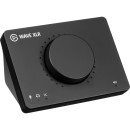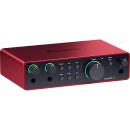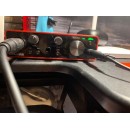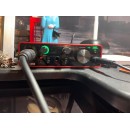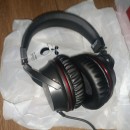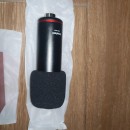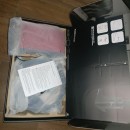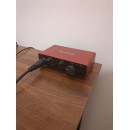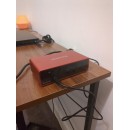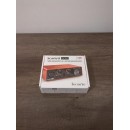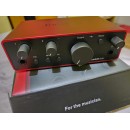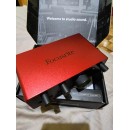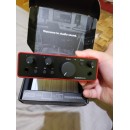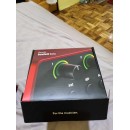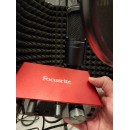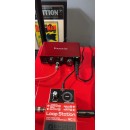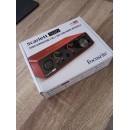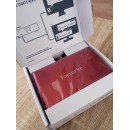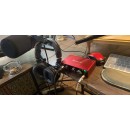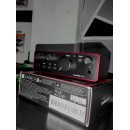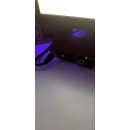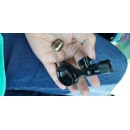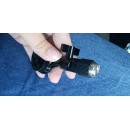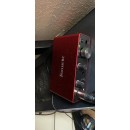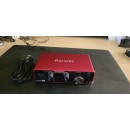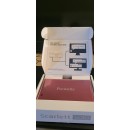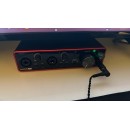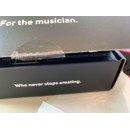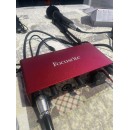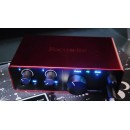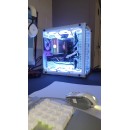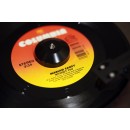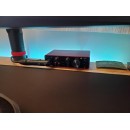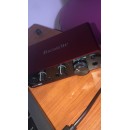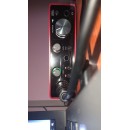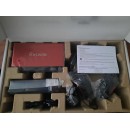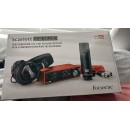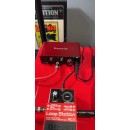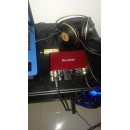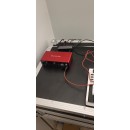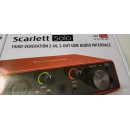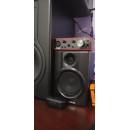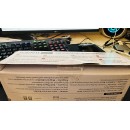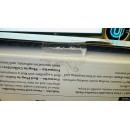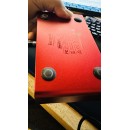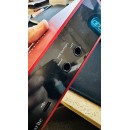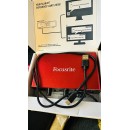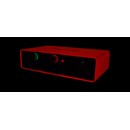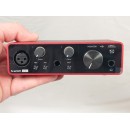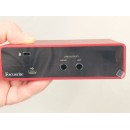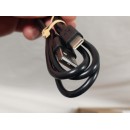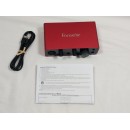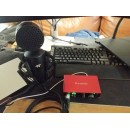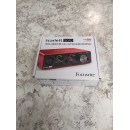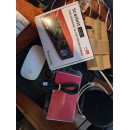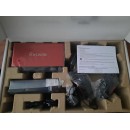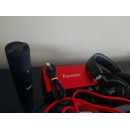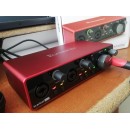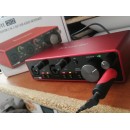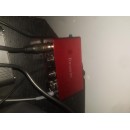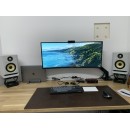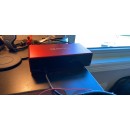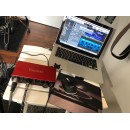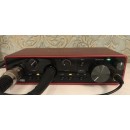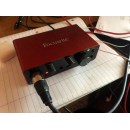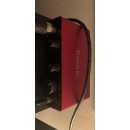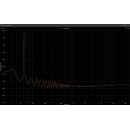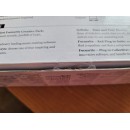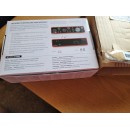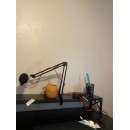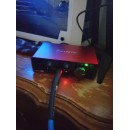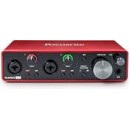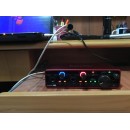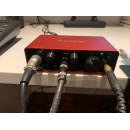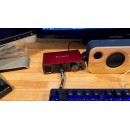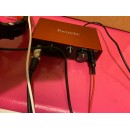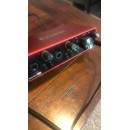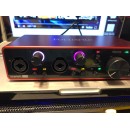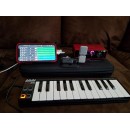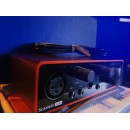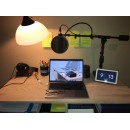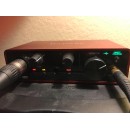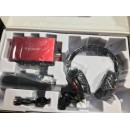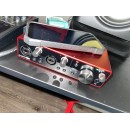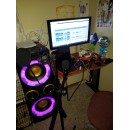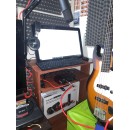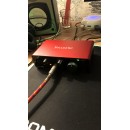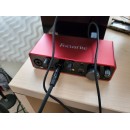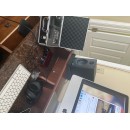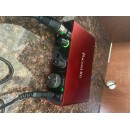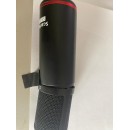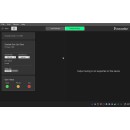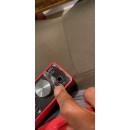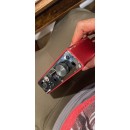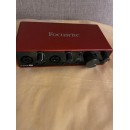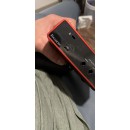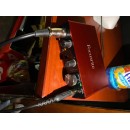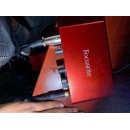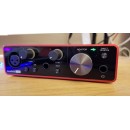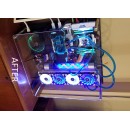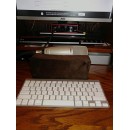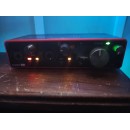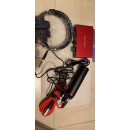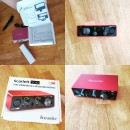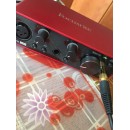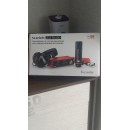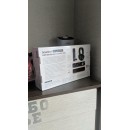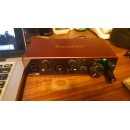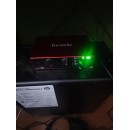Elgato Wave XLR vs Focusrite Scarlett 2i2: A Comprehensive Audio Interface Comparison
The Elgato Wave XLR USB-C Audio Interface is a popular choice for those who prioritize a streamlined setup tailored toward content creators and streamers. This audio interface is designed to integrate seamlessly with the Elgato ecosystem, offering features like capacitive mute, customizable clipguard technology to prevent distortion, and real-time monitoring. Its single XLR input is ideal for those who primarily use one microphone. The unit's simplicity makes it user-friendly, especially for beginners who wish to enhance their audio quality without dealing with complex settings.
On the other hand, the Focusrite Scarlett 2i2 USB-C Audio Interface (4th Generation) is known for its superior sound quality and versatility. It features two XLR/line inputs, allowing users to connect multiple microphones or instruments simultaneously, making it perfect for musicians, podcasters, and those who require more flexibility in their recordings. The 4th generation boasts improved preamps, which deliver a cleaner sound, and the Air mode gives recordings a brighter, more open sound. With its robust build and professional-level specifications, the Scarlett 2i2 continues to be a favorite among both home studio enthusiasts and professionals.
While both interfaces connect via USB-C, the choice between the two depends largely on the user's specific needs. The Elgato Wave XLR is ideal for content creators who want an easy-to-use device that integrates seamlessly with streaming software and requires minimal setup. It caters to those who focus on single-microphone setups. In contrast, the Focusrite Scarlett 2i2 offers more flexibility for those who need multiple inputs and are looking for studio-quality sound. It is also more suitable for those who might want to expand their setup in the future, given its additional input options and superior preamp quality.
In the following sections, we will delve into a detailed comparison of the Elgato Wave XLR and the Focusrite Scarlett 2i2 (4th Generation) USB-C Audio Interfaces. This article thoroughly examines all their specifications while also providing an insightful review of their respective advantages and disadvantages. Whether you are an audio professional or a passionate enthusiast, this comparison will help you determine which interface best suits your needs.
Detailed Analysis of Elgato Wave XLR and Focusrite Scarlett 2i2 (4th Gen)
| User Rating Based on Analysis of Reviews | |
|---|---|
|
Show More |
| Pros: | |
|---|---|
|
|
| Cons: | |
|---|---|
|
|
| Find Best Price | Find Best Price |
| Key Specs | |
|---|---|
| Channels of I/O | |
| Analog: 1 Input / 2 Outputs at 48/96 kHz |
Analog: 2 Inputs / 2 Outputs at 192 kHz |
| Maximum Sampling Rate | |
| 96 kHz / 24-Bit | 192 kHz / 24-Bit |
| Number of Microphone Inputs | |
| 1 Preamp | 2 |
| Analog Audio I/O | |
| 1x XLR 3-Pin Balanced Mic Input 1x 1/8" / 3.5 mm TRS Headphone Output |
2x XLR 3-Pin Balanced Mic Input 2x 1/4" TRS Balanced/Unbalanced Line/Hi-Z Input (Front Panel) 2x 1/4" TRS Balanced Monitor Output 1x 1/4" TRS Headphone Output (Front Panel) |
| Host Connection | |
| 1x USB-C | 1x USB-C |
| OS Compatibility | |
| Windows 10 |
macOS Windows |
| Power Requirements | |
| USB Bus Power | USB Bus Power, USB Power Adapter (Not Included) |
The Elgato Wave XLR USB-C Audio Interface features a compact design with a single analog input and dual outputs, supporting a maximum sampling rate of 96 kHz at 24-bit resolution. It includes a 1 XLR 3-Pin Balanced Mic Input and a 1/8" / 3.5 mm TRS Headphone Output, making it suitable for solo recording and streaming scenarios. The device is powered via USB Bus Power and is compatible with Windows 10 operating systems.Show More
In contrast, the Focusrite Scarlett 2i2 USB-C Audio Interface (4th Generation) offers greater flexibility with two analog inputs and two outputs, allowing for simultaneous recording of two microphones or instruments. It boasts a higher maximum sampling rate of 192 kHz at 24-bit resolution, which is beneficial for high-fidelity audio capture. The interface features 2 XLR 3-Pin Balanced Mic Inputs and 2x 1/4" TRS Balanced/Unbalanced Line/Hi-Z Inputs, along with 1/4" TRS Balanced Monitor Outputs and a 1/4" TRS Headphone Output, making it versatile for various recording setups. Additionally, it supports both macOS and Windows operating systems, and can be powered through USB Bus Power or an optional USB power adapter.
When comparing the two, the Elgato Wave XLR is tailored for users who require a straightforward, single-channel interface for streaming or basic recording tasks. In contrast, the Focusrite Scarlett 2i2 is designed for those who need more inputs, higher sampling rates, and greater versatility, making it a better choice for musicians and multi-source recording applications.
| General | |
|---|---|
| Channels of I/O | |
| Analog: 1 Input / 2 Outputs at 48/96 kHz |
Analog: 2 Inputs / 2 Outputs at 192 kHz |
| Maximum Sampling Rate | |
| 96 kHz / 24-Bit | 192 kHz / 24-Bit |
| Number of Microphone Inputs | |
| 1 Preamp | 2 |
| Built-In Microphone | |
| Input Level Adjustment | |
| 1x Knob | 2x Knob |
| Expansion Slots | |
The Elgato Wave XLR USB-C Audio Interface is designed for users who need a straightforward solution for audio input and output. It features 1 Input and 2 Outputs, operating at a maximum sampling rate of 96 kHz / 24-Bit. This interface is particularly suitable for single microphone setups, making it a good choice for podcasters and streamers who may not require multiple mic inputs. The interface includes 1 Preamp for enhanced audio quality and boasts a simple Input Level Adjustment with a single knob, allowing for easy management of sound levels.Show More
In contrast, the Focusrite Scarlett 2i2 USB-C Audio Interface (4th Generation) offers a more robust feature set, making it suitable for a wider range of audio applications. It provides 2 Inputs and 2 Outputs and supports a maximum sampling rate of 192 kHz / 24-Bit, which is ideal for high-fidelity recordings. This interface is equipped with 2 Microphone Inputs, allowing users to connect multiple microphones simultaneously, making it an excellent choice for collaborative projects such as music recordings or interviews. The Scarlett 2i2 also features 2 Knobs for Input Level Adjustment, providing individual control over each input channel.
While both audio interfaces lack a built-in microphone and expansion slots, the Elgato Wave XLR is tailored for simplicity with its single input setup, whereas the Focusrite Scarlett 2i2 offers greater flexibility with dual inputs and higher sampling capabilities. Therefore, users should consider their specific needs—whether they prefer a straightforward, single-input design or a more versatile interface that can accommodate multiple microphones and higher audio quality.
| Signal Processing | |
|---|---|
| Gain/Trim Range | |
| 75 dB |
Mic/Line Inputs: Up to +69 dB Hi-Z Inputs: 62 dB |
The Elgato Wave XLR USB-C Audio Interface offers a maximum gain/trim range of 75 dB, providing sufficient amplification for capturing high-quality audio. However, it lacks a pad feature, which may limit its versatility in handling very loud sound sources. Additionally, it includes a high-pass filter that operates between 80 to 120 Hz, allowing users to eliminate low-frequency noise and improve the clarity of their recordings. The interface also features a mute function per master, giving users control over their audio output.Show More
In contrast, the Focusrite Scarlett 2i2 USB-C Audio Interface (4th Generation) has a broader gain/trim range that accommodates different input types, with a maximum gain of up to +69 dB for mic/line inputs and 62 dB for Hi-Z inputs. This versatility makes it suitable for a wider array of instruments and microphones. Unlike the Elgato model, the Scarlett 2i2 does not specify a high-pass filter or mute function, which could be a consideration for users who prioritize these features.
Overall, while both audio interfaces have their unique strengths, the choice ultimately depends on the user's specific needs. The Elgato Wave XLR is tailored for users who require an efficient high-pass filter and a straightforward control mechanism, while the Focusrite Scarlett 2i2 excels in providing a flexible gain range suitable for various audio sources.
| Connectivity | |
|---|---|
| Analog Audio I/O | |
| 1x XLR 3-Pin Balanced Mic Input 1x 1/8" / 3.5 mm TRS Headphone Output |
2x XLR 3-Pin Balanced Mic Input 2x 1/4" TRS Balanced/Unbalanced Line/Hi-Z Input (Front Panel) 2x 1/4" TRS Balanced Monitor Output 1x 1/4" TRS Headphone Output (Front Panel) |
| Phantom Power | |
| 48 V, Selectable On/Off | 48 V, Selectable On/Off |
| Digital Audio I/O | |
| Host Connection | |
| 1x USB-C | 1x USB-C |
| Host Connection Protocol | |
| USB 3.0 / 3.1/3.2 Gen 1 | USB 2.0 |
| USB (Non-Host) | |
| 1x USB-C (Power Input) | |
| Sync I/O | |
| Network I/O | |
| MIDI I/O | |
The Elgato Wave XLR USB-C Audio Interface is designed for simplicity and efficiency, featuring a single XLR 3-Pin Balanced Mic Input that caters primarily to solo vocalists or podcasters. It also includes a 1/8" / 3.5 mm TRS Headphone Output for monitoring purposes. The interface supports 48 V Phantom Power, which is selectable for use with condenser microphones. In terms of connectivity, it offers a USB-C host connection compliant with USB 3.0/3.1/3.2 Gen 1 standards, but lacks additional digital or network I/O capabilities.Show More
On the other hand, the Focusrite Scarlett 2i2 USB-C Audio Interface (4th Generation) offers a more versatile setup with two XLR 3-Pin Balanced Mic Inputs and two 1/4" TRS Balanced/Unbalanced Line/Hi-Z Inputs on its front panel. This makes it suitable for recording multiple sources simultaneously. Additionally, it has two 1/4" TRS Balanced Monitor Outputs and a 1/4" TRS Headphone Output, enhancing its monitoring capabilities. Like the Elgato, it also features 48 V Phantom Power and connects via USB-C, but utilizes the older USB 2.0 protocol. It includes a USB-C input for power, providing more flexibility for power supply options.
In summary, the Elgato Wave XLR is tailored for users needing a straightforward, single-input solution, ideal for streaming or podcasting, while the Focusrite Scarlett 2i2 presents a more robust feature set, accommodating multiple inputs and outputs, making it a better choice for musicians or those requiring extensive audio routing capabilities.
| Performance | |
|---|---|
| Frequency Response | |
| 20 Hz to 20 kHz |
XLR Mic Inputs: 20 Hz to 20 kHz ±0.06 dB 1/4" Line Inputs: 20 Hz to 20 kHz 0.05 dB 1/4" Hi-Z Inputs: 20 Hz to 20 kHz 0.15 dB |
| Maximum Input Level | |
| 10 V |
XLR Mic: 16 dBu 1/4" Line: 22 dBu 1/4" Hi-Z: 12 dBu |
| Headphone Output Power | |
| 1/8" / 3.5 mm: 77 mW |
1/4": 32 mW into 33 Ohms 22 mW into 300 Ohms |
| Dynamic Range | |
| 100 dB |
XLR Mic Inputs: 116 dBA 1/4" Line Inputs: 115.2 dBA 1/4" Hi-Z Inputs: 113 dBA 1/4" Line Outputs: 120 dB 1/4" Headphone: 112 dB (at 33 Ohms) 115 dB (at 300 Ohms) Digital A/D Converters: 120 dB Digital D/A Converters: 130 dBA |
The Elgato Wave XLR USB-C Audio Interface offers a frequency response of 20 Hz to 20 kHz, making it suitable for capturing a wide range of audio frequencies. Its maximum input level is 10 V, which allows for good signal handling without distortion. The dynamic range of this interface is 100 dB, ensuring that it can capture both quiet and loud sounds effectively. Additionally, the headphone output power is rated at 77 mW through a 1/8" / 3.5 mm output, providing sufficient volume for monitoring.Show More
In contrast, the Focusrite Scarlett 2i2 USB-C Audio Interface (4th Generation) boasts a more detailed frequency response for different input types. The XLR mic inputs also have a frequency response of 20 Hz to 20 kHz ±0.06 dB, while the 1/4" line and Hi-Z inputs maintain a frequency response of 20 Hz to 20 kHz with minimal deviation. The maximum input levels are notably higher, with the XLR mic input reaching 16 dBu, the 1/4" line inputs at 22 dBu, and the Hi-Z inputs at 12 dBu. The Scarlett's dynamic range is impressive, particularly with XLR mic inputs at 116 dBA and line outputs at 120 dB.
When it comes to headphone output, the Scarlett 2i2 provides a more versatile output power of 32 mW into 33 Ohms and 22 mW into 300 Ohms, accommodating a wider range of headphones compared to the Elgato. The impedance for the Scarlett's XLR mic inputs is 3 Kilohms, while the 1/4" line inputs have an impedance of 60 Kilohms, and Hi-Z inputs at 1 Megohm. This makes it particularly suitable for various types of microphones and instruments.
In terms of total harmonic distortion plus noise (THD+N), the Scarlett 2i2 excels with ratings of -100 dB for XLR mic and line inputs, indicating a very clean signal. The EIN (Equivalent Input Noise) for the XLR mic inputs is rated at -127 dBu A-Weighted, further demonstrating its capability in low-noise environments. Overall, while both interfaces are excellent choices, the Focusrite Scarlett 2i2 provides higher input levels, a wider dynamic range, and more versatility in headphone output, making it a strong contender for more professional audio applications.
| Digital Audio | |
|---|---|
| Sample Rates | |
| 48 / 96 kHz | 44.1 / 48 / 88.2 / 96 / 176.4 / 192 kHz |
| Bit Depths | |
| 24-Bit | 24-Bit |
The Elgato Wave XLR USB-C Audio Interface supports sample rates of 48 and 96 kHz, providing good quality for recording and streaming purposes. However, it lacks sample rate conversion capabilities, which may limit flexibility in certain setups. The bit depth is at 24-Bit, ensuring high-resolution audio quality for professional use.Show More
In contrast, the Focusrite Scarlett 2i2 USB-C Audio Interface (4th Generation) offers a wider range of sample rates, including 44.1, 48, 88.2, 96, 176.4, and 192 kHz. This extensive selection allows for more versatility in various recording scenarios. Like the Wave XLR, the Scarlett 2i2 also features a bit depth of 24-Bit, ensuring high fidelity in audio capture.
When it comes to sync sources, the Scarlett 2i2 utilizes internal sync, which can provide a stable and reliable recording experience. The Elgato Wave XLR does not specify any sync sources, which may affect its performance in complex audio setups. Overall, while both interfaces deliver high-quality audio, the Focusrite Scarlett 2i2 offers more flexibility in sample rates and sync options, making it a more versatile choice for audio professionals.
| Audio Storage & Playback |
|---|
| Compatibility | |
|---|---|
| OS Compatibility | |
| Windows 10 |
macOS Windows |
The Elgato Wave XLR USB-C Audio Interface is designed to be compatible with Windows 10 only, which may limit its appeal for users who operate on macOS systems. Additionally, it requires an internet connection for software and driver downloads, which can be a drawback for those who prefer offline setups or have limited internet access.Show More
In contrast, the Focusrite Scarlett 2i2 USB-C Audio Interface (4th Generation) offers a broader compatibility spectrum, supporting both macOS and Windows operating systems. Furthermore, it is compatible with mobile apps, specifically iPadOS only, making it a versatile choice for users who want to utilize their audio interface across different devices.
Overall, while the Elgato Wave XLR is tailored for Windows users, the Focusrite Scarlett 2i2 presents a more flexible option, accommodating both desktop and mobile platforms. This can be a significant factor for users looking for an audio interface that can adapt to various environments and operating systems.
| Power | |
|---|---|
| Power Requirements | |
| USB Bus Power | USB Bus Power, USB Power Adapter (Not Included) |
The Elgato Wave XLR USB-C Audio Interface operates solely on USB Bus Power, which makes it a straightforward and convenient option for users who prefer a plug-and-play experience without the need for additional power sources. This aspect is particularly appealing for those who want to maintain a clean setup or require portability for on-the-go recording.Show More
In contrast, the Focusrite Scarlett 2i2 USB-C Audio Interface (4th Generation) also utilizes USB Bus Power but offers an additional option for power through a USB Power Adapter (not included). This flexibility allows it to be powered independently, which can be beneficial for users who need more power or are using complex setups. The specifications indicate that it requires a 5 VDC at 900 mA input and has a power consumption of 4.5 W, allowing for potentially greater performance in demanding recording situations.
Overall, the choice between the two interfaces may hinge on the user's specific needs regarding power supply. The Elgato Wave XLR is ideal for those seeking simplicity and ease of use, while the Focusrite Scarlett 2i2 provides additional power versatility that can cater to more intricate audio setups.
| Packaging Info | |
|---|---|
| Package Weight | |
| 1.68 lb | 1.9 lb |
| Box Dimensions (LxWxH) | |
| 7.6 x 6.1 x 3.9" | 8.2 x 7 x 2.6" |
The Elgato Wave XLR USB-C Audio Interface has a package weight of 1.68 lb and dimensions of 7.6 x 6.1 x 3.9 inches. This lightweight design makes it a portable option for creators who need an audio interface that is easy to transport. The compact size is suitable for small desk setups or for those who are frequently on the move.Show More
In contrast, the Focusrite Scarlett 2i2 USB-C Audio Interface (4th Generation) weighs slightly more at 1.9 lb, with box dimensions of 8.2 x 7 x 2.6 inches. Although it is heavier and slightly larger than the Elgato, it still maintains a relatively compact form factor, making it a viable option for studio and mobile recording setups alike.
Both interfaces offer practical dimensions for users, but the Elgato Wave XLR is designed for users prioritizing portability and desk space. On the other hand, the Focusrite Scarlett 2i2, while being slightly bulkier, may provide additional features that cater to different audio needs, appealing to users who may require more connectivity options or professional-grade performance.
| Customer Images | |
|---|---|
| Videos | |
|---|---|
|
|
|
